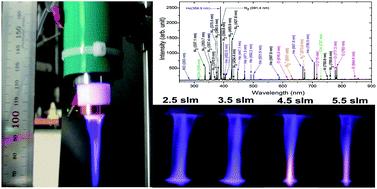Development and characterization of a multi-electrode cold atmospheric pressure DBD plasma jet aiming plasma application
Abstract
Atmospheric pressure plasma (APP) jets or plasma plumes have recently shown the potential for applications such as plasma surface modification and plasma medicine. These applications need insight into their plasma chemistry and discharge behavior, which are strongly influenced by the plasma parameters. In contrast to conventional APP jet devices, the present study utilizes a combination of six electrodes, and the outer ground electrodes are separated by Teflon to form a moderate-sized plasma column of nearly 10 mm. This atmospheric pressure plasma jet can be used to generate non-thermal plasma bullets away from the plasma generation region. The characteristics of the plasma plume were extensively diagnosed using current–voltage measurements, ICCD camera, and optical emission spectroscopy (OES). The APP plasmas, excited by a relatively low-pulsed dc voltage, were characterized in terms of discharge power, gas temperature, electron excitation temperature, electron temperature, and electron density. With simplified assumptions, these discharge parameters were determined from the OES measurements. Electron densities of the orders of magnitude of 1014 and 1015 cm−3 relevant to the electron temperature from ∼1.5 to 1.8 eV were obtained for the center regions in the jet discharge when the discharge power was varied from ∼10 to 55 W. Moreover, the effect of various operating parameters on the APP jet propagation was studied, and it was observed that the applied voltage plays a crucial role in the propagation of the plasma jet. Additionally, experiments involving APP plasma treatment on deionized water demonstrate noticeable effects of the He gas flow rate on the discharge behavior near the liquid surface. With the increase in the gas flow rate, the plasma column diameter on the liquid surface increases. Further, the deionized water treated with the APP jet shows the signatures of various active species such as oxygen and nitrogen, which are attributed to the transfer of the charged particles to the liquid. Moreover, due to a relatively low gas temperature (∼310–330 K) along with a high plasma plume, the possibility for the plasma application of this device was realized.



 Please wait while we load your content...
Please wait while we load your content...